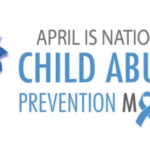By Shannon Traphagen
Pilates entered the fitness mainstream about a decade ago, however, it has been around since the 1920s. What has made Pilates popular in recent years is the increasing knowledge of its health benefits for people of all ages.
The goal of Pilates is to strengthen muscle groups — particularly emphasizing core abdominal strength. Much like yoga, Pilates focuses on posture, balance, and flexibility. Research confirms that practicing Pilates helps reduce the hormone Cortisol which controls stress. Stress is also reduced through strengthening core muscles and learning to breathe correctly — something Amy Alexander of Metamorphosis Pilates refers to as “being accidentally mindful.” Amy says,
“At its core, Pilates is body weight and spring-based strength training, with flexibility and functional movement work that helps strengthen the entire body.”
Alexander’s journey into Pilates came as a result of her own personal struggles. “I was overweight and my journey to lose weight and overhaul my lifestyle led me to Pilates. Eventually I changed careers and became a certified Pilates instructor. At first, I had no experience with classical Pilates, but I took the opportunity. The school through which I am certified, Peak Pilates, is considered to be one of the best. Pilates helped me balance my body, increase my flexibility, and noticeably change my posture. I now hold Peak’s highest level of certification,” says Alexander.
Alexander works with clients currently ranging from 12-84 years old. Apart from the physical benefits, Pilates helps increase cognitive awareness and mental alertness. Studies have shown that Pilates slows the progression of diseases such as Alzheimer’s and other dementias, Multiple Sclerosis, and Parkinson’s. “It is never too early or too late to start practicing Pilates, whether a young athlete or an older adult. In a private setting, it can be tailored to most people, including those with physical or cognitive impairments,” states Alexander. “Proactively, Pilates helps seniors build and retain muscle, preserve bone mass, improve flexibility, decrease anxiety, and increase cognitive mental awareness. After an injury, Pilates is a very safe way to work through recovery and rehabilitate the affected area,” says Alexander.
Buffalo Bills’ defensive end Jerry Hughes is thrilled with the results he has seen by making Pilates a regular part of his training with Alexander’s help. Hughes’ goals are to better utilize his abdominal muscles, pull his ribs and hips into line, and increase his hip flexibility and muscle strength. He says, “I love working with Amy. The practice has given me more power, helps me move faster, and I find that I have less chance of being injured. I’ve even put a Pilates studio in my home.”
In addition to Pilates, Alexander offers Myofascial Release (MFR), which is a gentle, sustained stretching or compression of tissue to relieve pain and discomfort. MFR is performed while fully clothed, and it is helpful for chronic issues, including fibromyalgia and old injuries.
To learn some in-home Pilates exercises with step by step instructions visit Metamorphosis Facebook page @metamorphosispb (under videos), visit her website at www.metamorphosispb.com, or call 716-239-7995.












